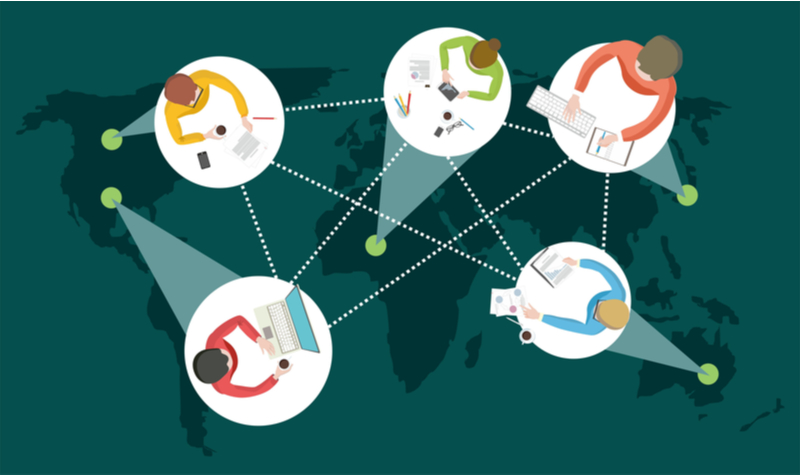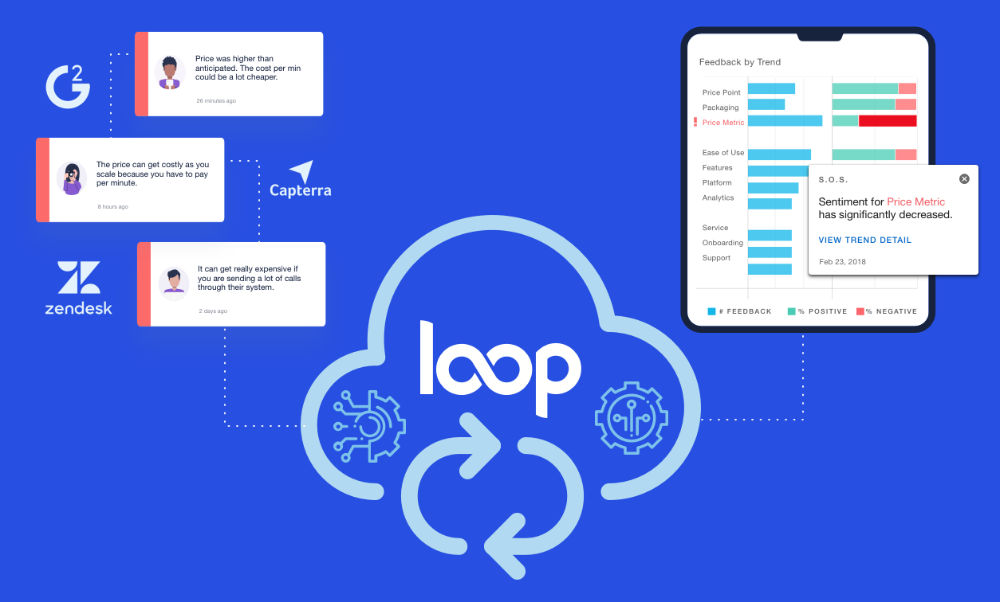Home » Anticipating customer needs in unprecedented times — 5 steps for B2B SaaS
Anticipating customer needs in unprecedented times — 5 steps for B2B SaaS

Lauren Culbertson
CEO, LoopVOC

On top of adjusting to a new normal, many Customer Success and Marketing leaders are tasked with the survival of their companies and customers. COVID-19 has taken its toll on almost every industry, woven its way into each step of the supply chain, disrupting our work, our health, and our sanity. Yet, some companies continue to find a way to survive and thrive during these times. Over the past 3 weeks, we’ve spoken with dozens of B2B SaaS companies to understand how they are staying in touch with what their customers need most to get through this to the other side.
Right now, B2B SaaS companies are looking for ways to:
- Ensure customers understand the full value of their offerings, to avoid getting cut.
- Anticipate how economic conditions are hitting individual customers, to segment those most likely to engage.
- Save time and money by replacing expensive, manual tools with lighter, more affordable ones.
- Gain real-time insight into customer needs to stay agile during a critical time.
Here’s how the best companies are staying connected with customers and delivering value right now:
1. Avoid the urge to spam customers with surveys.
While normally an acceptable vehicle for feedback collection, surveys are not the best way to listen to customers right now. Not only do you risk wasting time and money by surveying customers who are highly distracted with current events, but you also risk brand perception by appearing out of touch. Instead of sending out a blanket survey, which may come across as impersonal and intrusive, leading CX organizations opt for personal and authentic outreach in times of distress. These times can be very stressful and some customers might not even know what their needs are. When you anticipate customer needs, they will feel like you really understand what they want from your business.
Pro tip: Consider in-app questionnaires that ask users about their degree of impact and whether they could use 1:1 support, product coaching or consultation hours to get the most value out of your product during this time. This meets customers where they are (in your product) and offers an immediate way for them to receive personalized help.
2. Reach out to customers personally, with an authentic desire to understand how they’ve been impacted.
Every one of your customers is experiencing a different level of disruption to their lives, both professional and personal. The best way to understand how companies are adapting is by reaching out to them individually. Schedule a video call and take advantage of the fact that people are looking for social connections. Be human and seek to understand how you can help them. Anticipating what they are looking for from you is very important for this time, so make sure to be there for them and provide for what they need.
Pro tip: Many companies are repurposing sales and BDR outreach to check on customers rather than prospect new customers. This is a great way to ensure that every team member has a role in this new normal and that all needs of a customer feel heard and valued. When you anticipate needs of your customers, and they have a good experience with your business or your customer service, then your customer loyalty is likely to increase.
3. Listen in where customers are already giving you feedback to understand common issues and needs.
We often overlook how many customers tell us what they need every day, in places like online reviews, support tickets, and CRM notes. Take advantage of the feedback customers are already giving, and use simple tools and technology to quantify issues and concerns across customer segments. Reviewing customer service reviews will allow you to start anticipating needs and providing the best possible service.
Pro tip: CallRail is making the most of every resource by using natural language processing to replace manual efforts. Instead of team members labeling each piece of customer feedback that’s collected through support tickets, satisfaction surveys, and online reviews, they’ve turned to customer feedback analytics to auto-categorize feedback by trends and sentiment to gather insights in real-time. This means that their team can focus efforts on fixing customer issues quickly rather than digging to identify the root problem.
4. Over-communicate internally to make sure everyone is aligned on the path forward.
Identify key internal stakeholders and check-in daily to review positive and negative feedback trends impacting churn and new revenue growth. Segment customers with the most positive feedback to create profiles and positioning to drive new revenue sales. Align on the critical changes needed in product, positioning, offers, and customer experience to improve customer segments with the most negative feedback.
Pro tip: In this new remote environment, it’s also important that your employees feel supported and heard. Make sure that you’re offering your employees channels to ask questions, share concerns, and flag customer issues. Whether this is new Slack channels or daily team check-ins, make sure that you’re providing opportunities for your employees to stay engaged and empowered on behalf of your customers.
This is especially important for teams that are on the frontlines daily with your customers. Create a standard for them to share:
- What they’re hearing
- Who they’re hearing it from
- Recommended actions
5. Replace expensive, time-intensive tools with lighter, affordable listening tools
Customer feedback analytics tools can replace the costs of research, custom surveys, and BI tools by automating the aggregation and analysis of customer feedback across channels. B2B SaaS companies can save time and money by using simple tools to automatically categorize feedback based on key topics, quantify issues and concerns across customer segments, and organize strategic initiatives to address them. Tools can be a great way to analyze the current needs of your customer and also anticipate customer needs in the future.
In an effort to add value during a stressful time, we are offering free access to our customer feedback analytics for SaaS companies impacted by current conditions. We want to help the organizations who more than ever need to keep a finger on the pulse of feedback from customers but can not afford the costs of market research, surveys, analysts, or custom models to cut through the noise.
If you’re working through this right now and want to start to anticipate customer needs, send us a message. We’re here to help, even if that just means swapping strategies and sharing resources. The sooner you start anticipating needs of your customers, the easier it will be to stay connected and deliver value through stressful times.
Never stop fighting.



